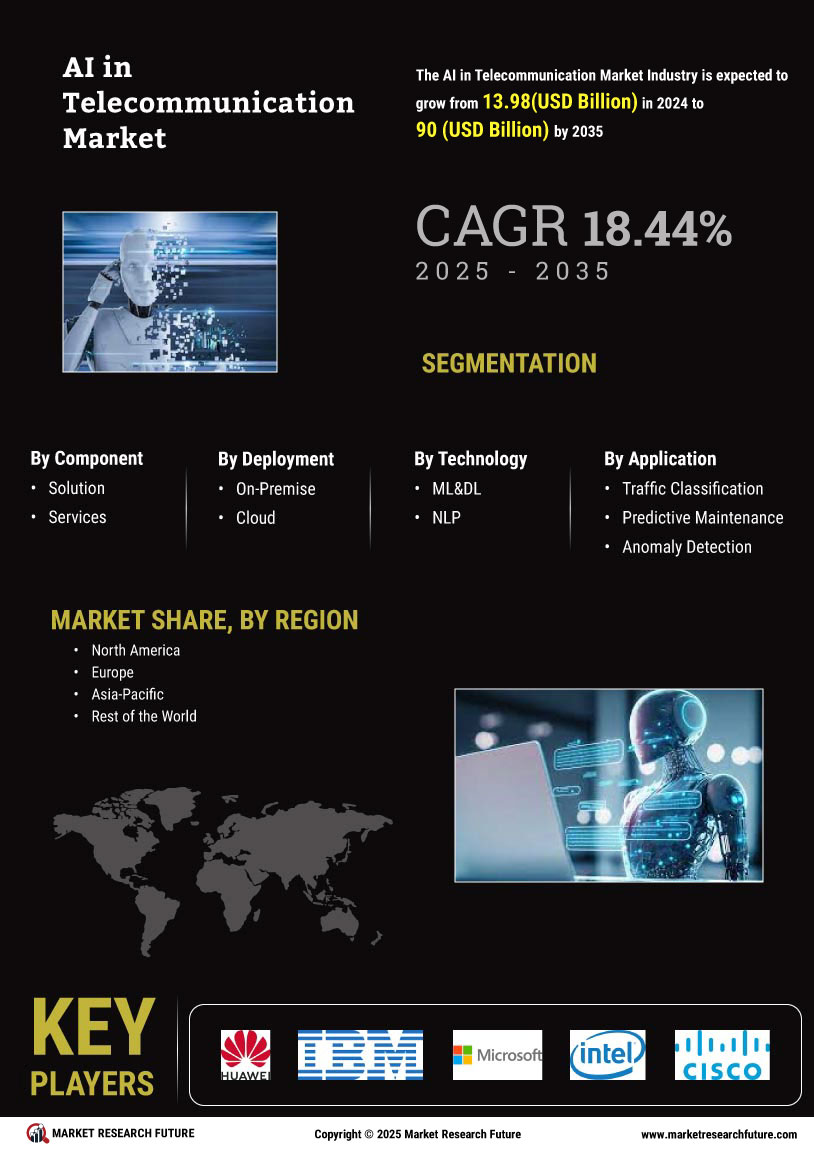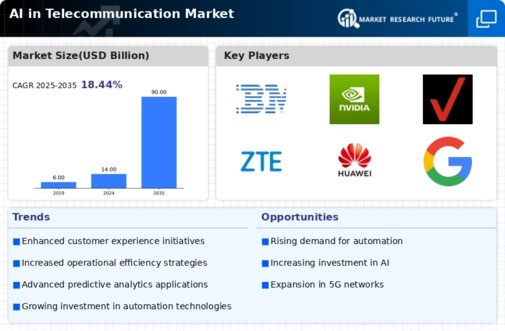Market Growth Projections
The Global AI in Telecommunication Market Industry is poised for substantial growth, with projections indicating a market size of 14.0 USD Billion in 2024 and an impressive increase to 90 USD Billion by 2035. This growth trajectory reflects the increasing integration of AI technologies across various telecom operations, from customer service to network management. The anticipated CAGR of 18.45% from 2025 to 2035 highlights the sector's potential for innovation and efficiency improvements. Such projections underscore the critical role of AI in shaping the future landscape of telecommunications.
Rising Cybersecurity Concerns
The Global AI in Telecommunication Market Industry is also shaped by rising cybersecurity concerns. As telecom networks become more interconnected, the risk of cyber threats escalates. AI technologies are increasingly employed to enhance security measures, enabling telecom operators to detect and respond to threats in real-time. For example, AI-driven security systems can analyze patterns and identify anomalies that may indicate potential breaches. This proactive approach to cybersecurity is vital for maintaining customer trust and regulatory compliance, thereby driving the adoption of AI solutions in the telecommunications sector.
Regulatory Support and Investment
Regulatory frameworks and government initiatives are playing a pivotal role in the Global AI in Telecommunication Market Industry. Governments worldwide are recognizing the potential of AI to drive innovation and economic growth within the telecommunications sector. This has led to increased funding and support for AI research and development. For instance, various countries are implementing policies that encourage the adoption of AI technologies in telecom operations. Such regulatory support not only fosters innovation but also attracts investments, further propelling the market's growth trajectory in the coming years.
Advancements in Network Infrastructure
The Global AI in Telecommunication Market Industry is significantly influenced by advancements in network infrastructure. The rollout of 5G technology necessitates the integration of AI to manage the increased complexity and data traffic. AI algorithms can analyze vast amounts of data in real-time, enabling telecom operators to optimize network performance and enhance user experiences. As the industry adapts to these technological shifts, the market is expected to grow at a CAGR of 18.45% from 2025 to 2035. This growth reflects the critical role of AI in supporting the next generation of telecommunications.
Operational Efficiency through Automation
Automation powered by AI is transforming operational efficiency within the Global AI in Telecommunication Market Industry. By leveraging machine learning algorithms, telecom companies can optimize network management, predictive maintenance, and resource allocation. This not only reduces operational costs but also enhances service reliability. For example, AI systems can predict network failures before they occur, allowing for proactive maintenance. The anticipated growth of the market, projected to reach 90 USD Billion by 2035, underscores the importance of automation in driving profitability and sustainability in the telecommunications sector.
Growing Demand for Enhanced Customer Experience
The Global AI in Telecommunication Market Industry is witnessing a surge in demand for enhanced customer experience. Telecommunication companies are increasingly adopting AI-driven solutions to provide personalized services, streamline customer interactions, and improve satisfaction rates. For instance, AI chatbots are deployed to handle customer inquiries efficiently, reducing wait times and operational costs. This trend is reflected in the projected market size, which is expected to reach 14.0 USD Billion in 2024. As customer expectations evolve, the integration of AI technologies becomes essential for telecom operators to remain competitive and responsive to market needs.

























Leave a Comment